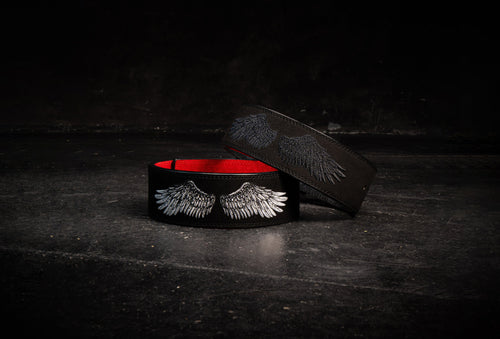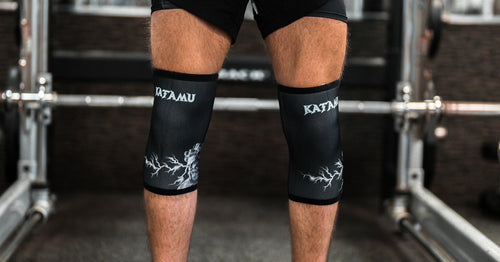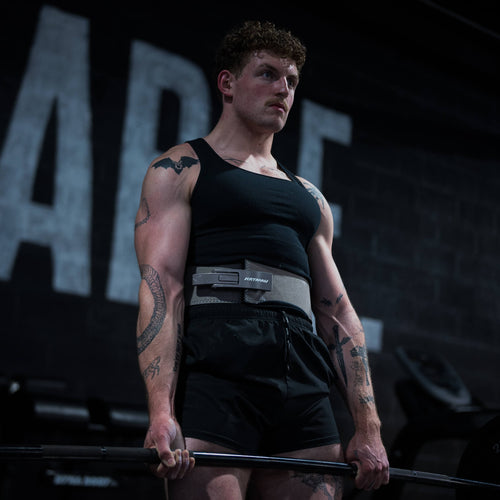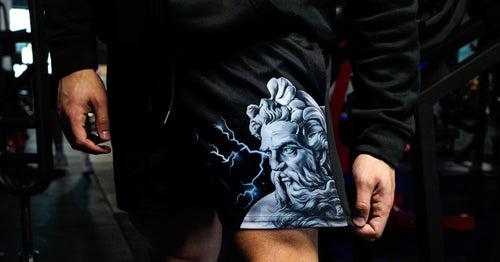Unlock new levels of strength and safety in 2025. Discover why lever belt powerlifting is quickly becoming every powerlifter’s secret weapon.
This expert handbook is your roadmap to mastering lever belt powerlifting. You’ll learn how to choose the right belt, set it up, and use it to maximize your lifts.
Inside, you’ll find the latest insights, step-by-step instructions, and pro tips for getting the most out of your lever belt. We’ll cover belt basics, selection guides, setup, lifting techniques, maintenance, common mistakes, and advanced strategies.
Powerlifters everywhere are turning to lever belts for better performance and injury prevention. Are you ready to achieve new personal records safely? Follow this guide for lever belt powerlifting success in 2025.
Understanding Lever Belts and Their Role in Powerlifting
Unlocking the secrets of lever belt powerlifting starts with understanding the gear itself. Lever belts are more than just an accessory—they're a crucial tool for stability and safety, especially as their popularity surges in competitive circles. Let’s break down what makes these belts unique, why they matter, and how to separate fact from fiction.
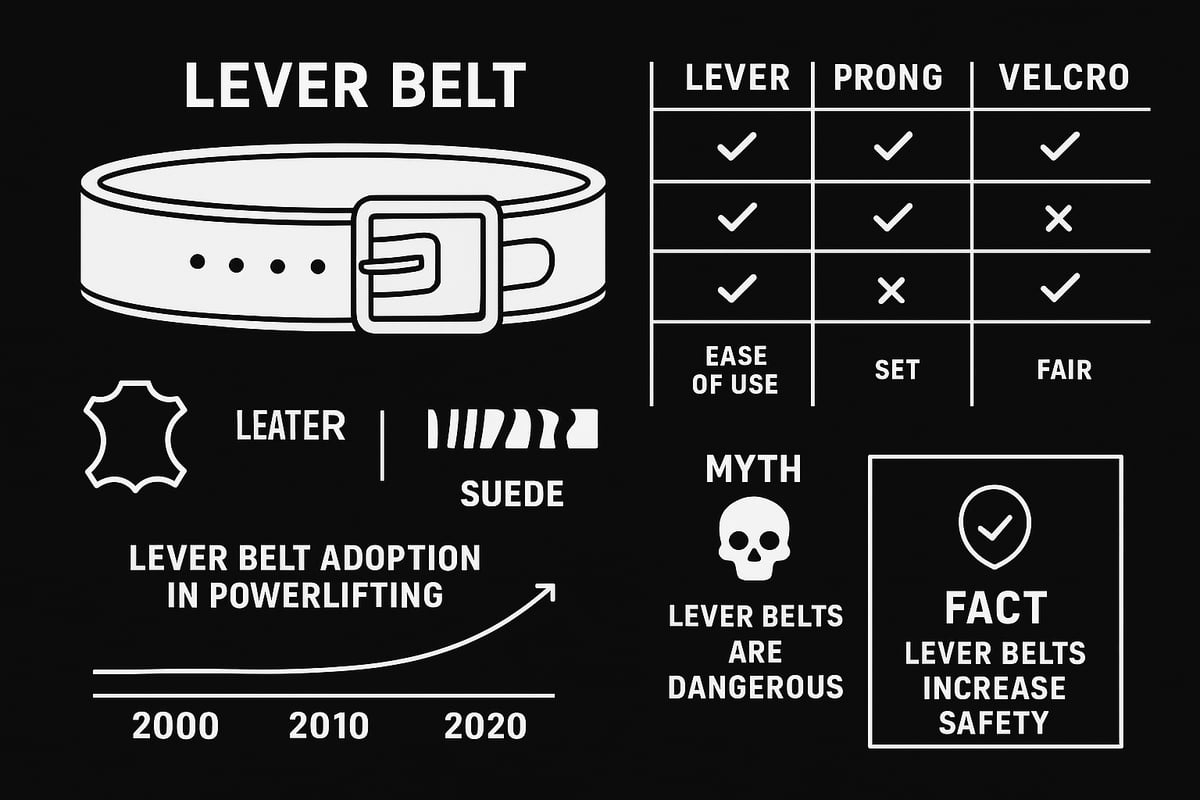
What is a Lever Belt?
A lever belt is designed with a solid leather or suede strap and a steel lever buckle that locks in place with a simple snap. Unlike prong or Velcro belts, the lever mechanism allows for quick adjustments and a consistent, super-tight fit. Most lever belts are made from thick, durable materials, offering superior support during heavy lifts.
The rise of lever belt powerlifting can be traced to their increasing use in top competitions, where lifters demand both strength and speed. If you want a deeper dive into the mechanics and benefits, check out this Lever Belt Weightlifting Guide for more details.
Why Lever Belts Matter in Powerlifting
Lever belt powerlifting is all about maximizing intra-abdominal pressure and trunk stability. By bracing against a rigid belt, lifters reduce the risk of injury and maintain better posture under heavy loads. Studies show that using a belt can boost maximal lifts by up to 15 percent, especially for squats and deadlifts.
Elite athletes consistently report hitting new personal records with a belt compared to lifting raw. The right lever belt powerlifting setup can be the difference between a safe, successful PR and a failed attempt.
Types, Thicknesses, and Sizing
Lever belts come in two standard thicknesses: 10mm and 13mm. The 10mm version is more flexible, making it a top pick for beginners or those with smaller frames. The 13mm belt is stiffer and preferred by advanced lifters who need maximum support for lever belt powerlifting.
| Thickness | Best For | Federation Approved |
|---|---|---|
| 10mm | Beginners, all-round use | Yes |
| 13mm | Advanced, heavy squats | Yes |
Proper sizing is key. Measure your waist where you’ll wear the belt, not at your pant line. Always check federation rules to ensure your lever belt powerlifting gear is allowed in competition.
Common Myths and Misconceptions
Many believe lever belt powerlifting is only for elite athletes. This is a myth—beginners benefit just as much from the added support. Another misconception is that belts weaken your core, but evidence shows they help you brace more effectively without reducing core strength.
Some think you should wear your belt for every set, but smart programming alternates between raw and equipped training. Novices and pros alike can avoid misuse by learning proper technique and gradually integrating lever belt powerlifting into their routines.
How to Choose the Best Lever Belt for Powerlifting in 2025
Selecting the right lever belt powerlifting gear is crucial for both safety and peak performance. With so many products on the market, it’s easy to feel overwhelmed. Let’s break down the essential factors that will help you find your perfect match and elevate your training experience.
Key Criteria for Selection
When comparing lever belt powerlifting options, focus on material quality first. High-grade leather and reinforced stitching ensure that your belt will last through years of heavy lifting. Next, examine the buckle mechanism—premium levers offer smoother adjustments and greater reliability than cheaper alternatives.
Comfort is also key. Look for belts with ergonomic contouring and padding that fit your body shape. Some lifters prefer single prong or double prong alternatives, but lever systems are prized for their quick release and secure fit. To help you dig deeper into what makes a quality belt, check out Choosing Good Lifting Belts for a detailed breakdown of essential features.
Sizing and Fitting Guide
Proper sizing is non-negotiable for lever belt powerlifting effectiveness. Start by measuring your waist at the point where you’ll wear the belt—usually just above the hips. Use the manufacturer’s sizing chart, but always allow room for adjustments, especially if your weight fluctuates between bulking and cutting phases.
Common fitting mistakes include wearing the belt too high or too low, or choosing a size that is too large for your frame. Most brands offer multiple sizing holes and adjustable levers to help you fine-tune your fit. Remember, federations like IPF and USAPL have strict requirements on belt width and thickness, so double-check compliance before purchasing.
Top Features to Look For in 2025
Lever belt powerlifting gear in 2025 is packed with innovations. Look for advanced lever buckles with quick-release systems for easy on and off between sets. Enhanced padding and ergonomic shaping are trending, making belts more comfortable for long sessions.
Customization is another hot feature—brands now offer a range of colors, engravings, and themed motifs. According to user satisfaction surveys, belts with these new features score higher on comfort and personal expression. For example, many lifters are upgrading to belts with antimicrobial linings to minimize odor and wear.
Why Choose Premium Lever Belts from Katamu
Katamu stands out in the lever belt powerlifting scene by offering both 10mm and 13mm options, catering to beginners and advanced lifters alike. Their premium construction uses top-tier materials and robust levers designed for years of use.

Beyond durability, Katamu belts come in unique designs and themed collections, letting you express your personality in the gym. Each belt is backed by a 1-year warranty and bundled kits are available for added convenience. With over 50,000 lifters worldwide trusting Katamu, you join a community that values both performance and style.
Price vs. Value: Making the Right Investment
Lever belt powerlifting investments range from $50 for entry-level models to $180 or more for premium options. While the upfront cost may seem high, consider the cost-per-use over years of lifting. Quality belts resist stretching, cracking, and hardware failure, offering long-term savings.
Look for brands that provide a solid warranty and fair return policy. Many seasoned lifters report that spending more upfront for a durable belt reduces the need for frequent replacements. Market trends in 2025 show a growing preference for high-value belts that blend performance with longevity.
Step-by-Step Guide: Setting Up and Using a Lever Belt
Ready to unlock the full power of lever belt powerlifting? Follow this hands-on guide to get your lever belt dialed in for safety, comfort, and maximum strength. Each step helps you build confidence and skill, whether you’re new to the gym or chasing elite numbers.
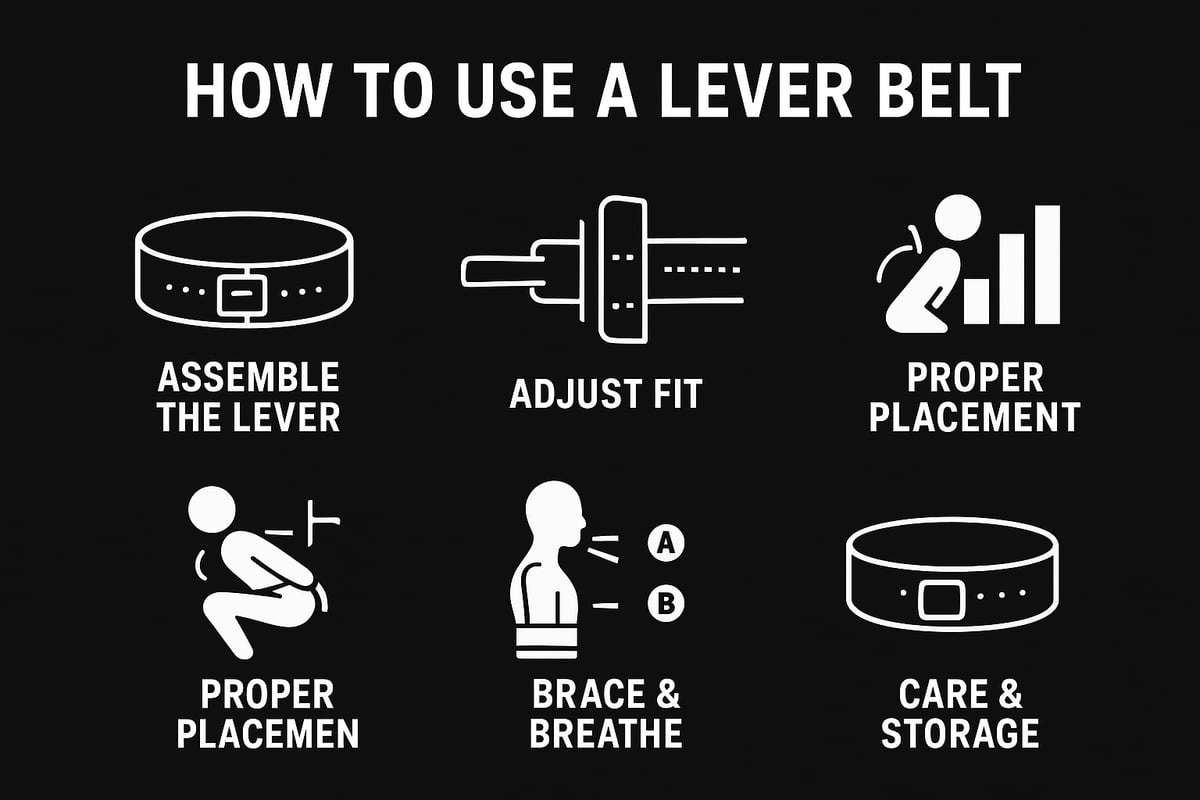
Step 1: Assembling and Adjusting Your Lever Belt
Unboxing your new lever belt is the start of your lever belt powerlifting journey. Begin by laying out all parts, including the belt and lever buckle. Use the included screws and a screwdriver to attach the lever to the belt at your estimated waist size.
For best results, follow these steps:
- Wrap the belt around your waist to find the right hole for the lever.
- Attach the lever using the screws, ensuring it is centered and secure.
- Test the closure to check for snugness, but avoid overtightening.
First-time users should watch the manufacturer’s setup video for extra guidance. A well-assembled belt means no distractions during heavy lifts.
Step 2: Correct Belt Placement and Positioning
Proper placement is key for lever belt powerlifting. Position the belt just above your hip bones and below your rib cage. The “sweet spot” varies by torso length and lift type.
For squats, most lifters place the belt slightly higher on the torso. For deadlifts, a touch lower often feels better. Always check:
- The belt does not dig into ribs or hips.
- You can brace your core without discomfort.
- Placement allows for proper breathing.
Experiment during warm-ups to find your ideal position. Small adjustments make a big difference in comfort and support.
Step 3: Bracing and Breathing Techniques
Mastering your core brace is essential in lever belt powerlifting. Start by taking a deep breath into your belly, not your chest. Push your abs against the belt as if you’re trying to expand your entire midsection.
Try this stepwise drill:
- Inhale through your nose, filling your lower belly.
- Push your core outward into the belt.
- Hold this brace as you begin the lift.
Synchronize your breath with each phase of your lift. For detailed bracing methods, check out The Belt Bible, which offers science-backed tips and techniques.
Step 4: Using the Lever Belt for Squats
When squatting, lever belt powerlifting requires dialing in belt tightness. For high-bar squats, a slightly looser fit allows more torso movement. For low-bar squats, a tighter fit can boost stability under heavy loads.
Follow these safety checks before every set:
- Ensure the lever clicks firmly shut.
- Confirm the belt sits evenly across your core.
- Check your squat form in the mirror.
Elite lifters often credit lever belts for new squat PRs. Consistent belt use supports your back and helps you focus on perfect technique.
Step 5: Using the Lever Belt for Deadlifts
Deadlifts are a cornerstone of lever belt powerlifting. Adjust the belt lower than for squats to avoid pinching during the hinge. Both conventional and sumo deadlifters benefit from a snug, not constricting, fit.
Key tips for deadlift setup:
- Set the belt height so it clears your hips when bending.
- Ensure the lever does not interfere with your grip or setup.
- Experiment with tightness to balance support and movement.
Many lifters report significant deadlift gains after optimizing their belt setup.
Step 6: Using the Lever Belt for Bench Press and Other Lifts
Lever belt powerlifting isn’t just for squats and deadlifts. Some lifters use the belt for bench press and overhead press to stabilize their core. Use the belt only if it enhances your setup and does not restrict breathing.
Tips for upper body lifts:
- Loosen the belt slightly compared to lower body lifts.
- Use the belt for heavy sets or when learning proper bracing.
- Skip the belt if it feels uncomfortable or impacts your range of motion.
Test belt use on rows and accessory lifts to find what works best for your training.
Step 7: Removing, Storing, and Caring for Your Lever Belt
After your lever belt powerlifting session, remove the belt gently by releasing the lever. Avoid yanking on the buckle, which can damage the mechanism.
Care tips for long-lasting performance:
- Wipe down sweat and chalk after each use.
- Store the belt flat or hung up to preserve shape.
- Clean with mild soap and water as needed.
Regular care extends your belt’s lifespan, keeping it ready for every PR attempt. Check the warranty and support options from your manufacturer for extra peace of mind.
Advanced Lever Belt Powerlifting Strategies for 2025
Unlocking the full potential of lever belt powerlifting takes more than just strapping on a belt. Advanced strategies can help you push boundaries, fine-tune your approach, and compete with confidence. Let’s dive into the pro tips and tactics every serious lifter needs to know.

Programming Belt Use for Maximum Gains
Strategic programming is essential in lever belt powerlifting. Most elite athletes introduce the belt as loads approach 80–85% of their one-rep max. This approach helps you build raw strength first, then maximize power output with belt support.
A typical periodized plan alternates between beltless and belted phases. Start your cycle with raw lifts, then add the belt during peak intensity blocks. Data from A Qualitative Review Of Annual Progress In Powerlifting shows that lifters who program their lever belt powerlifting smartly see sustained annual progress and higher PRs.
Programming templates often look like this:
| Week | Belt Use | Intensity |
|---|---|---|
| 1–4 | Beltless | 60–75% 1RM |
| 5–8 | Partial Belt | 75–85% 1RM |
| 9–12 | Full Belt | 85–100% 1RM |
Experiment with different templates to match your training style and goals.
Fine-Tuning Belt Tightness and Position
Precision matters in lever belt powerlifting. The “perfect” tightness varies by lift and your own body. For squats, many lifters prefer a snug fit that allows deep bracing, while deadlifts often work better with a slightly looser belt for easier setup.
Position the belt between your ribs and hips, adjusting up or down a few centimeters to find the sweet spot. Elite lifters often tweak placement by lift type and torso length. Micro-adjustments can make a major difference in comfort and performance.
Tips for dialing in your fit:
- Test belt settings at different intensities
- Log your best settings for each lift
- Don’t ignore even small discomforts
- Use your phone to record and review form with each adjustment
These details set the foundation for next-level lever belt powerlifting.
Lever Belt Use in Competition vs. Training
Federation rules are strict in lever belt powerlifting competitions. Always check that your belt meets width, thickness, and branding requirements before meet day. Most federations, like IPF and USAPL, allow only certain specifications.
In training, you can experiment more with belt settings and even use different belts for various lifts. On competition day, consistency is key. Set your lever belt to a familiar setting, and avoid last-minute changes.
Many lifters keep a dedicated “meet belt” and a separate training belt. This reduces wear and ensures your competition belt stays in peak condition. Practicing with your meet-day setup in the weeks leading up to an event helps build confidence and routine.
Accessorizing: Combining Belts with Other Support Gear
Lever belt powerlifting is most effective when combined with other support gear. Knee sleeves, wrist wraps, and lifting straps can all enhance your safety and performance.
Common gear combos include:
- Lever belt + knee sleeves for squats
- Lever belt + wrist wraps for bench press
- Lever belt + straps for heavy deadlifts
Bundled gear kits are popular among advanced lifters. Integrated routines help you transition quickly between lifts and minimize setup time. Studies show that proper gear combinations can reduce injury rates and support consistent progress.
Keep your accessories organized and inspect them regularly for wear.
Troubleshooting: Solving Common Lever Belt Issues
Even the best lever belt powerlifting routines hit snags. Common issues include discomfort, bruising, or buckle malfunctions. If your belt pinches or slips, check for correct placement and tightness.
Quick fixes:
- Loosen the belt slightly to improve blood flow
- Adjust height to avoid rib or hip contact
- Lubricate the lever mechanism if sticking occurs
If your belt shows cracks, excessive stretching, or buckle damage, it may be time for a replacement. Most manufacturers offer warranty support for defective parts. Keeping your belt clean and dry extends its lifespan and maintains performance.
Stay proactive and troubleshoot early to keep your lever belt powerlifting journey on track.
Common Mistakes and How to Avoid Them
Mistakes with lever belt powerlifting can limit your progress, comfort, and even safety. Recognizing these pitfalls ensures you get the most from your lever belt powerlifting journey. Here’s how to dodge the most common errors.
Over-Tightening or Under-Tightening the Belt
One frequent lever belt powerlifting mistake is getting the tightness wrong. If your belt is too tight, it can restrict breathing and cause bruising. Too loose, and you lose crucial support for your core.
To find the right fit, fasten the belt so you can take a deep breath and brace your core, but not so tight that you can’t expand your abdomen. Signs of over-tightening include red marks, pain, or difficulty breathing. A loose belt will shift during lifts or fail to help you brace.
Quick Checklist:
- Breathe deeply with the belt on
- Check for pinching or discomfort
- Test support during warm-up sets
Adjust as needed. Remember, lever belt powerlifting is about support, not restriction.
Incorrect Belt Placement
Placing your belt too high or too low can affect lift mechanics and reduce the benefits of lever belt powerlifting. High placement may dig into your ribs, while low placement can limit hip movement or compress your pelvis.
To avoid this, position the belt above your hips and below your ribs, adjusting for your torso length and the type of lift. For squats, some lifters prefer a slightly higher placement, while deadlifts often require a lower fit.
Table: Belt Placement Guide
| Lift Type | Recommended Placement |
|---|---|
| Squat | Mid-abdomen, above hips |
| Deadlift | Slightly lower, near navel |
Experiment with small adjustments to find your “sweet spot.” Proper placement boosts comfort and lever belt powerlifting performance.
Relying Too Heavily on the Belt
A common lever belt powerlifting myth is that the belt replaces core strength. Over-reliance can limit true core development and create imbalances.
Balance your training by including beltless sets and core exercises. Use the belt for maximal or near-maximal lifts, not every single set. This approach maintains core engagement and prevents dependency. For a deeper dive into these misconceptions, see Weightlifting Belt Myths and Facts.
Tips:
- Alternate belt and beltless sets
- Incorporate planks, ab rollouts, and back extensions
- Track your progress with and without the belt
Smart use of lever belt powerlifting keeps your core strong and your lifts safe.
Neglecting Belt Maintenance and Replacement
Even the best lever belts require care. Ignoring maintenance can shorten their lifespan and compromise lever belt powerlifting safety.
Regularly inspect your belt for cracks, fraying, or worn stitching. Clean sweat and chalk off with a damp cloth, and let it air dry. Avoid storing your belt rolled up or in damp places. Replace your belt if you notice significant wear, broken buckles, or loss of support.
Maintenance Tips:
- Wipe down after each session
- Store flat in a dry area
- Check hardware and stitching monthly
Prioritizing care ensures your lever belt powerlifting gear stays reliable for years.
Lever Belt Powerlifting FAQs for 2025
Unlocking peak performance in lever belt powerlifting means having answers to common questions before you even step onto the platform. Whether you're just starting or aiming for a new PR, these FAQs will help you make informed decisions and avoid common pitfalls.
Who Should Use a Lever Belt?
Lever belt powerlifting is not reserved just for elite lifters. Beginners, intermediates, and professionals can all benefit from the stability and safety a quality belt provides. The main consideration is whether your training involves heavy compound lifts like squats and deadlifts.
Generally, anyone seeking to maximize core stability and minimize injury risk during maximal lifts can use a lever belt. However, youth athletes and those with certain medical conditions should consult a coach or physician before starting lever belt powerlifting. Research on relationships between anthropometry and maximal strength also shows that different body types may require different belt thicknesses for optimal support.
Many lifters, regardless of experience, have shared stories of improved confidence and performance after incorporating lever belts into their routines. Expert consensus is clear: if your goal is to lift heavier while staying safe, a lever belt is a smart investment.
How Often Should I Use My Lever Belt?
Lever belt powerlifting is not about wearing your belt for every single set. Instead, most lifters use their belt on top sets or near-maximal efforts, especially during squats and deadlifts. This approach helps you build raw core strength while leveraging the belt’s support when you need it most.
A typical week of lever belt powerlifting might include beltless warm-ups followed by belted working sets. Many coaches recommend reserving the belt for lifts above 80% of your one-rep max. This way, you maintain a strong core foundation while still reaping the belt’s benefits during heavy training.
Surveys show a wide range of preferences, but strategic use is key for both progress and injury prevention. Listen to your body and adjust frequency as your lever belt powerlifting journey evolves.
Are Lever Belts Allowed in All Powerlifting Federations?
Not all lever belt powerlifting competitions have the same rules, so it’s essential to check your chosen federation’s guidelines. Major organizations like IPF, USAPL, and WRPF approve lever belts that meet specific width, thickness, and material requirements.
Before competition day, review your belt’s specifications against the federation’s approved list. This avoids disqualification and ensures your focus stays on the lift, not the equipment. Most federations require belts to be between 10mm and 13mm thick, with a secure buckle system.
A competition checklist can help you keep track of requirements and approval status. Belt disqualification rates are low, but it’s always better to double-check and be prepared for your lever belt powerlifting event.
Can I Use the Same Belt for All Lifts?
Versatility is a huge plus in lever belt powerlifting, and many lifters use one belt for multiple lifts. A high-quality lever belt can support you through squats, deadlifts, and even bench press, with minor adjustments in placement and tightness.
Some athletes prefer different belts or settings for specific lifts, especially as they advance. For example, a slightly looser fit may work better for deadlifts, while a tighter setting is ideal for squats. If you’re choosing your first belt, check out this best lifting belts for powerlifting guide to compare multi-purpose options.
Ultimately, whether you use one belt or several depends on comfort, federation rules, and your personal training style. Experiment to find what feels best for your lever belt powerlifting routine.
How Do I Break In a New Lever Belt?
Breaking in a new belt is a rite of passage in lever belt powerlifting. New leather belts can be stiff at first, but with regular use, they quickly mold to your body. Start by wearing the belt during warm-ups and lighter sets to soften the leather.
You can also gently roll and flex the belt by hand to speed up the process. Most lifters find that their belt becomes comfortable after two to four weeks of consistent training. Manufacturer recommendations often include storing the belt in a cool, dry place and avoiding excessive moisture.
User experiences show that with a little patience, your lever belt will soon feel like a custom fit, giving you the support you need for years of lifting.
Now that you know what makes a great lever belt and how to get the most out of it in 2025, you’re ready to take your powerlifting journey to the next level. Whether you’re chasing new PRs or just want that extra bit of confidence under the bar, having the right belt makes all the difference. At Katamu, you’ll find premium lever belts that combine long lasting quality with unique style—perfect for everyday gymgoers like us. Ready to create a setup that matches your goals and vibe? Build your setup and start lifting with confidence today.
